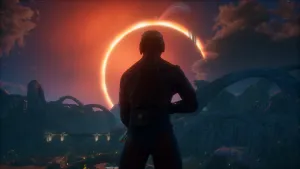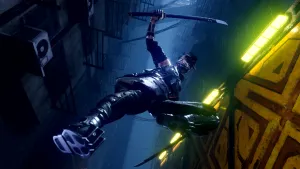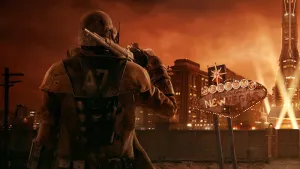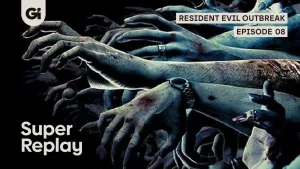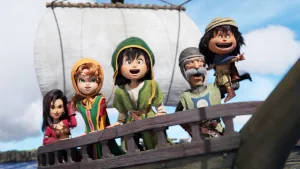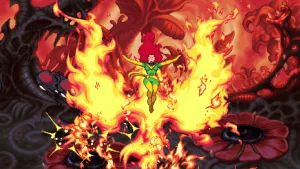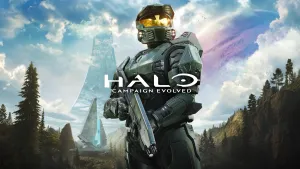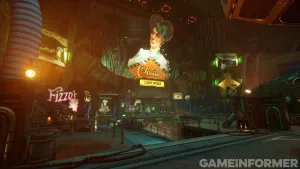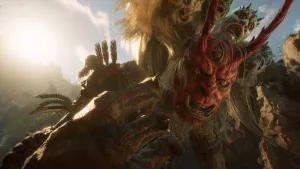A Middle Class Struggle

This article on the challenges that mid-sized, publicly owned companies like THQ face was originally featured in Game Informer issue 228.
“Think about what we have coming in front of us. Homefront. The next Red Faction. The Warhammer 40K MMO. Saints Row 3. People can say what they want, but we’ve got a pipeline that I think [EA, Activision, and Take-Two Interactive] would be envious of…”
THQ CEO Brian Farrell was pretty confident when he spoke those words to IGN in early 2010. Unfortunately, only one of those games – Saints Row: The Third (above) – was a success, and two years later the title is arguably one of the only positives the company can claim.
Coming into this year, THQ had high hopes for a number of its initiatives. Homefront was looking to compete in the already crowded FPS market, the uDraw tablet was seen as a way to target its kids’ audience in a way that was different from the traditional movie-based licenses the company was even then trying to get away from, and both Red Faction: Armageddon and MX vs. ATV Reflex were being counted on to provide a solid backbone as previously successful franchises. Unfortunately, none of these brought the results the company was looking for. Although the company did have stalwart performers in its WWE and UFC games, with so many other projects underperforming, the company’s third quarter losses was three times what they were in 2010. This was underscored most notably by the uDraw failure, which accounted for $100 million in lost revenue.
In the ugly aftermath of such a disappointing year, the company dropped its uDraw tablet line entirely, implemented organizational changes that will result in the loss of 240 people across the company at large, and faces possible delisting from the NASDAQ because its stock has traded for under $1 for 30 days. Is THQ’s situation just a product of its own doing, or does it speak to a larger issue in game publishing and development that makes it hard for mid-sized companies like THQ to thrive?
Stuck In The Middle
THQ certainly deserves the bulk of the blame for its collapse, but there is a backdrop to the company’s mess that highlights larger systemic problems for mid-sized publishers who are struggling to keep up with bigger competitors like Electronic Arts and Activision-Blizzard.
THQ is a publicly traded company on the NASDAQ, and as such, the pressure to give shareholders a good stock price can affect the company. Billy Pidgeon, senior analyst at M2 Research, says that bigger companies like EA tend to under-promise and over-deliver to their shareholders, while mid-sized companies like THQ tend to do the opposite because shareholders expect it to grow and become the next EA. Being publically traded can also put too much emphasis on the relative short term, which is at odds with the two- to three-year development cycle for triple-A games and the five- to seven-year one for consoles.
“There are risks, also, to being a mega-publisher,” Pidgeon admits, “but it is a tough place to be a mid-range publisher because the pressure and the focus is to move up and become a larger publisher and even a mega-publisher if possible. For a mid-sized studio, it’s very risky. Backing specific platforms and filling specific category holes can cost you big time. You really have to manage your portfolio and assets very carefully and not overreach.” Pidgeon points out that downsizing can be impossible as well because of the painful cuts in personnel and assets that are often necessary.
Despite the shedding of organizational jobs (as opposed to the development talent at the studios), THQ has signaled that it still intends to move up rather than move down. The company declined to be interviewed for this article, but CEO Brian Farrell has publically stated that THQ expects to compete in the core gamer market with original IP such as Homefront (now in the hands of Crytek), titles from the newly created THQ Montreal studio headed by Patrice Désilets (Prince of Persia, Assassin’s Creed), the Insane collaboration with director Guillermo del Toro, the Saints Row franchise, and more.
Core gamers certainly hope that THQ can execute this strategy, but unfortunately having a slate of potentially attractive games is only one piece of the puzzle. Colin Sebastian, senior research analyst at Baird Research, argues that hunting for a few hits is a losing proposition in this day and age.
“I think scale is very important in this industry,” he says. “You [have to] have something that distinguishes you, your games, your platform, and you have a cost structure that matches that like Epic or Valve. As opposed to the old, traditional portfolio approach to publishing where you have this overhead of sales, marketing, distribution, and developers, and are going to put out 10 games and hope that two or three of those are good enough to pay for everything else. That’s an outmoded business model in video games.” Larger companies may be able to mask their problems through the sheer size of their gaming libraries, but there is little margin for error in most companies’ catalogs.
Sebastian says that the shrinking video game market adds extra pressure to the search for hits. “The whole console market is consolidating to a small number of really large franchises,” he says. “It makes it tough for second-tier publishers that have only small- and mid-sized console titles, and that’s where THQ finds itself.”
Looking at the NPD sales numbers for 2011, it’s hard to argue that there may be fewer consumer dollars to go around as this console generation winds down. Software sales in 2011 were down three percent from the previous year, hardware sales for the year decreased, and sales figures for the industry overall in January 2012 signified the 28th month of decline since March 2009, according to industry website Gamasutra.
Then you must consider the age-old specter of rising development costs and the fact that you have to spend money to make money. “The break-even point for a large-scale console game has gone up,” Sebastian says. “It used to be you could make money selling four- or five-hundred thousand copies of a PS2 game, and now you have to sell at least a million units of an Xbox 360 game to break even.” This raises the question of whether titles like Darksiders II or Tomonobu Itagaki’s Devil’s Third – two relatively unknown titles to mainstream gamers that would demand aggressive marketing budgets to raise awareness – even have a shot at achieving mainstream success.
Meanwhile, Pidgeon notes that this is one area where THQ in particular could exhaust itself trying to chase its own tail. Investment fuels growth, but growth has to occur to raise the capital for investment. Pidgeon says that if THQ’s employee layoffs ever reach the studio level and developer talent has to be cut, this could affect the games that are supposed to make the company profit. Investment back in the company isn’t always easy, but it’s necessary. “THQ has to do two things to survive now: Increase revenues and increase profits, and that can be hard to do,” he says. “You have to invest to become profitable, and then you have to build and maintain that for a while, and then you can start to bring in the high profit margins, but it does require some investment.”
Continue for analysis on THQ's possible future.
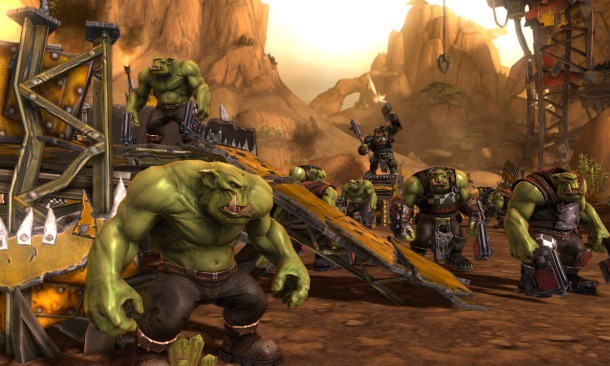
Warhammer 40,000 Dark Millenium Online is no longer an MMO because THQ couldn't find a business partner for the project.
The Future of THQ
With its fate on the NASDAQ uncertain and its organization now considerably thinner, many question if THQ is better off looking for a buyer than it is toughing out its restructuring.
“I think, quite honestly, the best-case scenario for THQ at this point is to get acquired,” Sebastian says. “Get acquired by a company with a lot more financial and development resources that can layer on with what they have in the studios. [The buyer can] keep the top three or four franchises and keep the best studios and developers. For those people, they could then be a part of a stronger organization, and for THQ it would be an exit strategy that avoids that worst-case scenario [of closing their doors entirely].”
While it’s unknown if anyone has approached THQ about an acquisition, the best the company can do is forge ahead and hope it can rebuild behind series like Homefront and Darksiders in place of movie-based kids licenses. Perhaps these or other franchises – and the studios that make them – could even be sold off to the highest bidder if THQ wants to make sacrifices in lieu of a complete sale of the company.
It remains to be seen, however, if this latest restructuring will stick, as the company has previously tried to reorient itself to unfortunate results. Farrell was candid in the importance the company placed on the uDraw tablet and its subsequent demise. “We were looking at uDraw as a bridge to this core and digital future, and that bridge turned out to be a plank that we walked off of,” he told investors in a recent conference call.
As THQ bets the farm on titles aimed at core gamers, another company once in a similar position found a different way to survive. In the early to mid-2000s, Majesco imploded under the high profile failures of the Advent Rising franchise and Double Fine’s Psychonauts, and subsequently had to cancel future games Demonik (by Terminal Reality) and the license-based Taxi Driver. When faced with delisting by NASDAQ, the company chose to play small ball, switching its focus to casual fare such as the Cooking Mama series and Zumba Fitness franchise. Building off the success of those properties, Majesco eventually expanded to iOS and Facebook products – all while its stock price staved off delisting.
Is this a possible course for THQ? Each company has its own set of circumstances, and certainly downsizing THQ’s studio system would be a massive overhaul, but at a minimum companies like Majesco perhaps serve to illustrate the rock and a hard place that mid-level companies like THQ can find themselves in.
For its part, THQ does have a strategy to go after the digital commerce market that’s geared around microtransactions, add-on content, a Facebook/iOS title Margaritaville, a recent publishing deal with mobile/social/casual developer Innovative Leisure, and more. The company reported that its digital revenue at the end of calendar 2011 was up 81 percent. However, it’s also worth noting that entering 2011, the company counted uDraw and an extensive online store for MX vs. ATV Alive as part of its digital strategy, and both of these failed. Furthermore, THQ is betting on Warhammer 40,000 Dark Millennium Online, but THQ is also openly soliciting outside funding help for the MMO.
THQ and other mid-sized companies may only be a failure or two away from having to undergo radical changes or worse, but as much as there are lessons to be learned from THQ’s story, there is also a glimmer of hope.
“THQ has done some great stuff,” says Pidgeon, specifically mentioning Saints Row: The Third. “It really expanded the sandbox category, and that’s one of the reasons I’d like to see THQ stick around. Them taking on risks, which the industry doesn’t really encourage, has resulted in some great software. I’d like to see that as an example to other companies. But if you do those things and don’t do well, you have to cut important assets and the company goes into financial trouble, that’s not the takeaway people are going to have.”

Get the Game Informer Print Edition!
Explore your favorite games in premium print format, delivered to your door.
- 10 issues per year
- Only $4.80 per issue
- Full digital magazine archive access
- Since 1991
